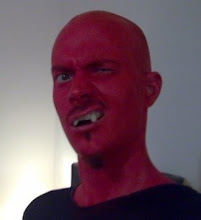After the mirth-free zones that are The Squid and the Whale,
Margot at the Wedding and Greenberg, you could be forgiven for thinking that
Noel Baumbach’s latest directorial credit would be another take on the middle
class ennui of the privileged yet unhappy Americans that arthouse audiences
seek out for a classier dose of Schadenfreude. And yet, Frances Ha is full of
warmth and joy.
The ingredients are still there - starving artist struggling
in the big city but with a relatively wealthy parental safety net, reaching
that point of adulthood where a lack of direction moves from malaise to panic. But
instead of the naked confusion and anger, there is joy at finding friends and
celebrating what the city has to offer, up alongside the awkwardness of breaks in communication and the
difficulty in balancing practical survival and fulfilment.
As the co-writer, star Greta Gerwig undoubtedly has a huge
influence and tempers some of Baumbach’s more sombre excesses. Crucially
Frances Ha presents a loose knit group of people who are all likeable, flaws
and all, and the female lead doesn’t pin her existence around a male
relationship.
The Black and White photography suits New York well, giving
the film more of a timeless feel as it could comfortably slot in amongst other
NYC cinema of the last 3 or 4 decades.
Having just watched 2 seasons of Lena Dunham’s Girls, the
similarities are undeniable, but the underlying themes of female friendship and
educated, directionless women in their 20's scratching a living in New York are
larger than that series and this film. This is both a great little character
study and a loving, honest look at a particular generation.
The Conjuring
Setting itself up as yet another classic ‘period’ horror, taking
place in 1971 and trumpeting about the ‘true story’ origins, The Conjuring
finds itself too sharp to convince when compared to originals such as the Texas
Chainsaw Massacre, or recent homages like The House of the Devil. Its cinematography
is more in keeping with the likes of director James Wan’s previous horror
offering Insidious, though this isn’t such a bad thing, for instance when the digital
clarity of the photography picks out the eerie skews of shade in the basement.
Speaking of the basement, The Conjuring is rammed with some
of the most obvious of all horror clichés.
- family arrives at big old house in middle of nowhere
- house with ghoulish past
- bricked-up rooms
- youngest kid soon making imaginary friend/s
- bumps in the night
- doors opening/closing by themselves
- crew of exorcist/ghost investigator types
- an exorcism
- creepy doll
- apparitions glimpsed in mirrors/windows
- creepy music box
- reverse Hansel and Gretel - the apparition guides people to the optimum haunty bit of the house by making noises and moving things
But The Conjuring doesn’t just steal from the old classics,
as a number of riffs from Paranormal Activity are adopted wholesale, mainly the
grabbing of the sleeping leg variety.
The cast are superior, with Patrick Wilson and Vera Farmiga
good as the open-minded ghost hunters, and Lili Taylor great as usual, here
playing the mother of the family targeted by the other-wordly.
Still, however polished it is there is nothing original
here, and again unlike House of the Devil it’s not enough of a loving retro-production
to compensate for that same-old same-old feeling, nor is it good enough to
compete with the likes of the Exorcist.
The Hunger
Tony Scott’s début feature set the tone for much of his future work
- stylish and a little empty.
The Hunger isn't the first attempt to bring the vampire myth
up to date and it won’t be the last, but it doesn't avoid the issue of
cementing itself fully in its time. The film is so 80's it hurts, from the goth
club opening to the endless smoking of the first half and maze of rooms full of billowing
net curtains and doves in the second, the film was already a museum piece once
released.
Early on the film feels a little like a music video aiming
for French chic, as Catherine Deneuve and Bowie smoulder from behind sunglasses
and plumes of smoke, the editing cutting quickly as various unnatural light
filters wash everything in moody hues, but once Susan Sarandon pops up it feels
that the lack of dialogue in the earlier
scenes is more to do with the acting chops on offer up to that point than a stylistic choice.
Sarandon sticks out as an intense focal point in the second
half, both in her passion for her new romantic interest in Deneuve’s vampire,
and in the addiction/withdrawal scenes as she battles with her change, her
blood losing the fight with ‘inhuman’ blood. Also the idea of a room full of
boxed-up former lovers, suffering through their immortality in dessicated
bodies is a little bit more chilling than the average crappy fang-flick, but
the lack of engagement with most of the characters blunts the true horror you
should be feeling because of it.





0 comments:
Post a Comment